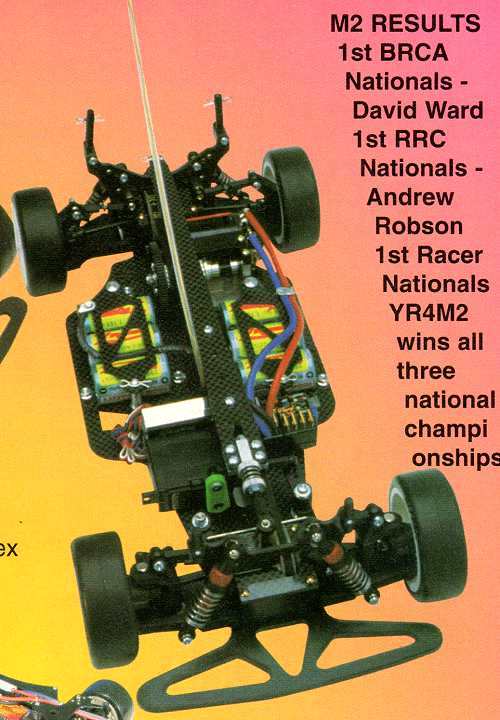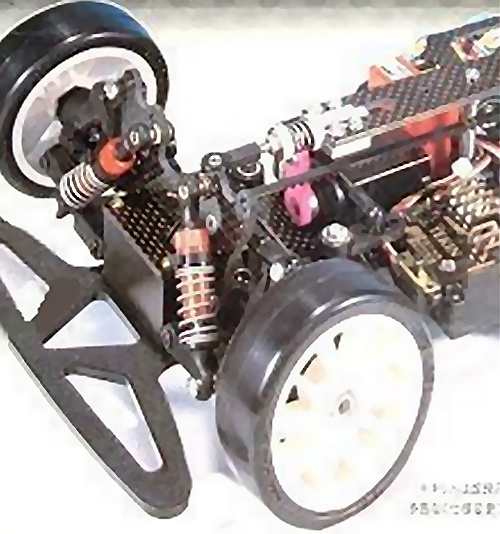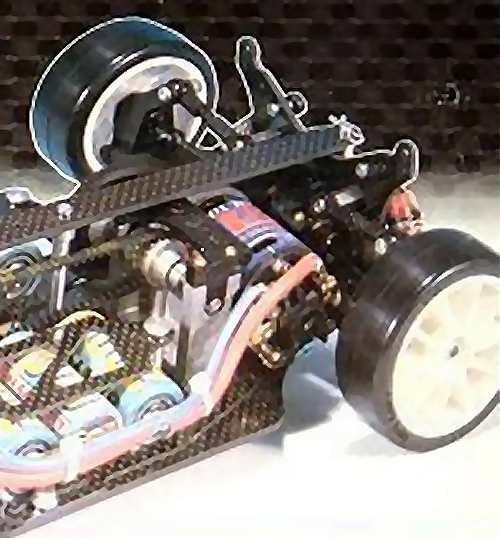

|
|
|


|
|
1/10 Scale Electric Rally/Touring Car:
Yokomo YR-4 M2 - Radio Controlled ModelHistory and Info for the Yokomo YR-4 M2:
Introduced by Team Yokomo circa 1997, the 4WD YR4 M2 Super Competition Touring Car kit, was based on the car driven by Josh Kyrul to win the 1997 ROAR Carpet On-Road National Championship.
▼ Scroll Down for More Images ▼
|








|
|
|

★ Yokomo YR4-M2 ★

★ Yokomo YR4-M2 Chassis ★

★ Yokomo YR4-M2 Chassis ★

|
Buying a Used Yokomo YR-4 M2
|
|
Manufacturers and Brands Catalogued, Listed and Reviewed by RC-Scrapyard.
At present, the RC Model Manufacturers, Brands and Distributors covered by us are: ABC Hobby, Academy, Acme Racing, Agama Racing, Amewi, Ansmann Racing, ARRMA, Team Associated, Atomic RC, Axial, AYK, Bolink, BSD Racing, Capricorn, Carisma, Carson, Caster Racing, Cen, Corally, Custom Works, Durango, Duratrax, ECX - Electrix, Exceed RC, FG Modellsport, FS-Racing, FTX, Fujimi, Gmade, GS-Racing, Harm, HBX, Helion, Heng Long, Himoto Racing, Hirobo, Hitari, Hobao, Hong-Nor, Hot Bodies, HPI, HSP, Intech, Integy, Jamara, JQ Products, Kawada, Kyosho, Losi, LRP, Maisto, Mardave, Marui, Maverick, MCD Racing, Megatech, Mugen, New Bright, Nichimo, Nikko, Nkok, Ofna, Pro-Pulse, Protech, PTI, RC4WD, Redcat Racing, RJ-Speed, Robitronic, Schumacher, Seben, Serpent, Smartech, Sportwerks, Step-Up, Tamiya, Team-C Racing, Team Magic, Thunder Tiger, Tomy, Top Racing, Traxxas, Trinity, Tyco, Vaterra RC, Venom, VRX Racing, WLToys, X-Factory, Xmods, Xpress, Xray, XTM, Yankee RC, Yokomo, ZD Racing and Zipzaps. |
|
Hints, Tips and Information
Sway Bars
On most forms of RC model cars, Sway Bars, also referred to as Stabilizers, Torsion Bars, or more commonly in some parts as Anti Roll Bars, are often nothing more than a short length of spring steel, clamped to the chassis or sometimes the gearbox of the car, extending out to the lower wishbones direct or connected to the wishbones using short adjustable or fixed length links and ball joints, depending on their position. |
|
Hints, Tips and Information Electric Motors for RC ModelsBrushless Motor Basics
Choosing the right Brushless motor for your needs can be a daunting task for those new to Radio Controlled Models. If you have a local club perhaps you could ask some of the more experienced members for their advice, but a little basic knowledge about the subject, so you know what questions to ask is always useful. |
|
RC Models:
|
Radio & Motors: |
Other
Accessories: |